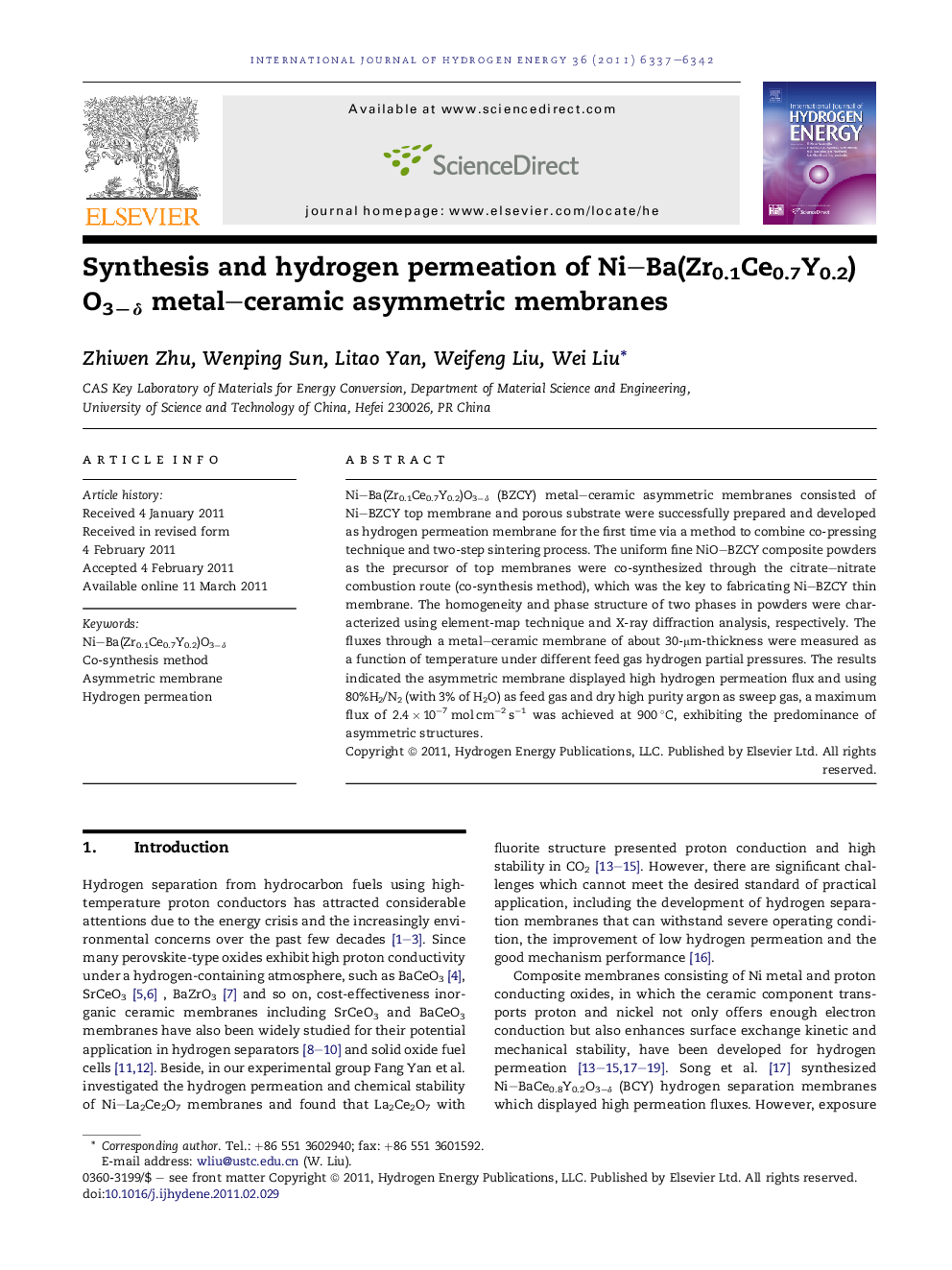| Article ID | Journal | Published Year | Pages | File Type |
|---|---|---|---|---|
| 1279563 | International Journal of Hydrogen Energy | 2011 | 6 Pages |
Ni–Ba(Zr0.1Ce0.7Y0.2)O3−δ (BZCY) metal–ceramic asymmetric membranes consisted of Ni–BZCY top membrane and porous substrate were successfully prepared and developed as hydrogen permeation membrane for the first time via a method to combine co-pressing technique and two-step sintering process. The uniform fine NiO–BZCY composite powders as the precursor of top membranes were co-synthesized through the citrate–nitrate combustion route (co-synthesis method), which was the key to fabricating Ni–BZCY thin membrane. The homogeneity and phase structure of two phases in powders were characterized using element-map technique and X-ray diffraction analysis, respectively. The fluxes through a metal–ceramic membrane of about 30-μm-thickness were measured as a function of temperature under different feed gas hydrogen partial pressures. The results indicated the asymmetric membrane displayed high hydrogen permeation flux and using 80%H2/N2 (with 3% of H2O) as feed gas and dry high purity argon as sweep gas, a maximum flux of 2.4 × 10−7 mol cm−2 s−1 was achieved at 900 °C, exhibiting the predominance of asymmetric structures.
